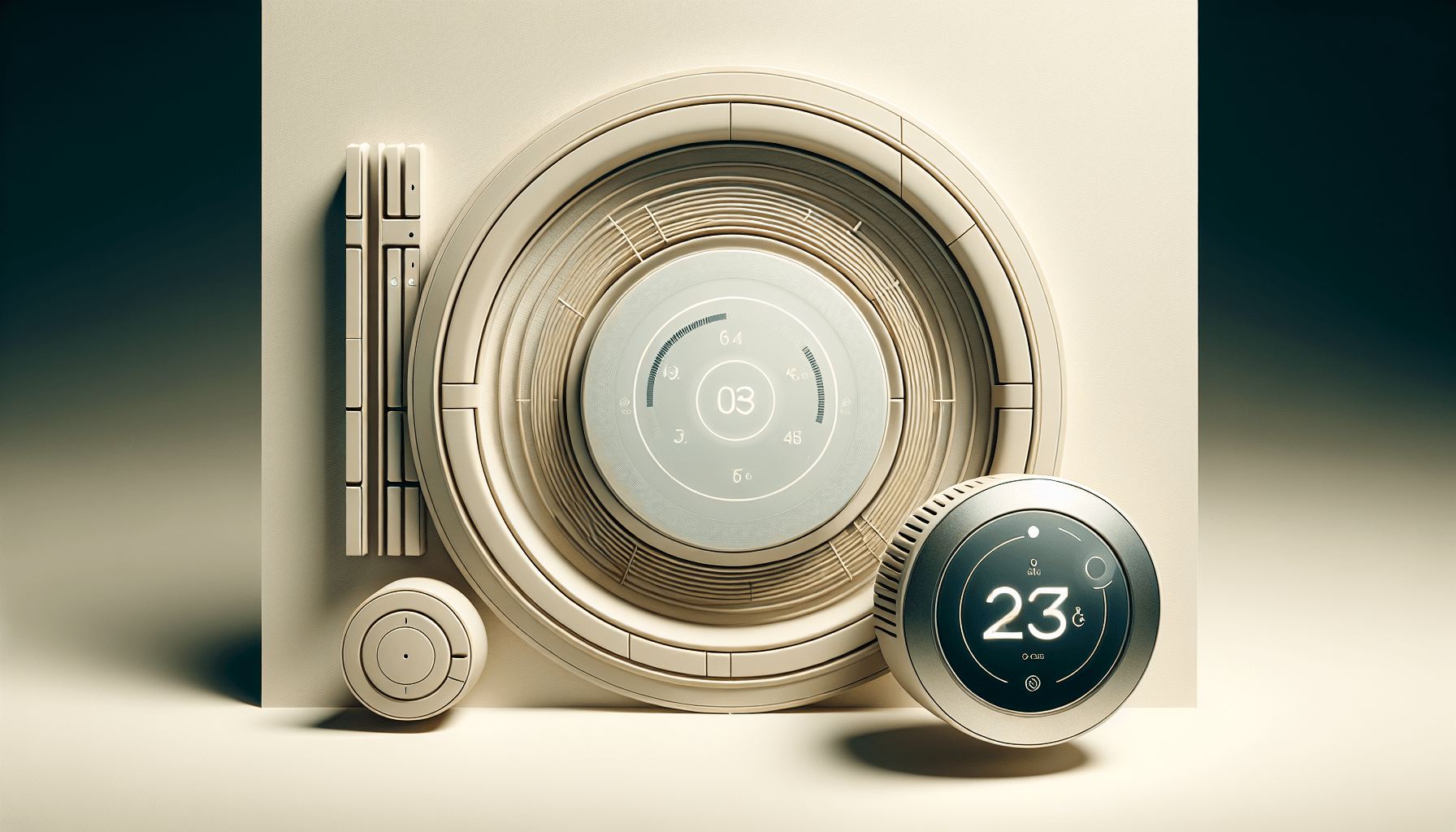Are you ready to transform our homes into energy-efficient sanctuaries? In today’s world, it’s more important than ever to reduce our carbon footprint and save on energy costs. In this article, “How Can I Make My Home More Energy-efficient?”, we’ll explore practical, easy-to-implement strategies that can help us cut down on energy consumption and increase efficiency. From simple home adjustments to innovative technology, we’ll discover the best ways to make our living spaces greener and kinder to our wallets. How can I make my home more energy-efficient? It’s a question we’ve all asked at some point. With the rising concern for the environment and the desire to save on energy bills, making our homes more energy-efficient is more relevant now than ever. Let’s explore various ways to improve our home’s energy efficiency, breaking down each element so it’s easy to understand and implement.

Understanding Energy Efficiency
Before we dive into the specific steps, let’s clarify what energy efficiency means. Energy efficiency refers to using less energy to perform the same task. This not only helps in reducing our energy bills but also minimizes our carbon footprint. By making our homes more energy-efficient, we contribute to a more sustainable environment.
Evaluating the Current Energy Efficiency of Your Home
To improve energy efficiency, we first need to understand our home’s current state. Here are some initial steps we can take to evaluate our energy usage:
Conduct an Energy Audit
An energy audit is a detailed examination of how energy is used in our home. An audit can help us identify areas where we are losing energy and provide us with recommendations on how to improve.
| Energy Audit Steps | Explanation |
|---|---|
| Professional Audit | Hiring a certified energy auditor to conduct a thorough evaluation. |
| Do-It-Yourself Audit | Using online tools and checklists to perform a basic energy assessment on our own. |
Both methods will give us valuable insights, but a professional audit will be more detailed and accurate.
Examine Energy Bills
Looking at our energy bills over the past year can help us identify trends and see if our energy consumption spikes during certain seasons. This review will provide a baseline to measure the effectiveness of any energy improvements we make.
Improving Insulation and Sealing
Air leaks and poor insulation are major culprits of energy loss in homes. Addressing these issues can drastically improve our home’s energy efficiency.
Insulation
Insulation helps keep our home warm in the winter and cool in the summer. Here are some areas we should focus on:
- Attic: Insulating the attic is one of the most effective ways to improve energy efficiency.
- Walls: Properly insulated walls help maintain a consistent indoor temperature.
- Floors: Insulating floors, especially those above unheated spaces, can prevent heat loss.
Sealing Air Leaks
Air leaks can be found around windows, doors, and other openings. Here’s how we can address them:
- Weatherstripping: Applying weatherstripping around doors and windows can prevent air leaks.
- Caulking: Use caulk to seal gaps and cracks around windows, doors, and other openings.
- Draft Stoppers: Use draft stoppers to block gaps under doors.
Upgrading to Energy-efficient Appliances and Systems
Old, inefficient appliances consume more energy than necessary. Upgrading to energy-efficient models can result in significant savings.
Appliances
Look for appliances with the Energy Star label, as they meet strict energy efficiency guidelines set by the U.S. Environmental Protection Agency.
| Appliance | Energy-efficient Features |
|---|---|
| Refrigerator | Energy Star rating, adjustable temperature settings. |
| Dishwasher | Energy-efficient cycles, low-water usage. |
| Washing Machine | High-efficiency models, front-loading designs. |
| Dryer | Moisture sensors, Energy Star rating. |
Heating, Ventilation, and Air Conditioning (HVAC)
HVAC systems are major energy consumers in our homes. Upgrading to energy-efficient HVAC systems can lead to significant savings.
| HVAC Component | Energy-efficient Solutions |
|---|---|
| Furnace | High-efficiency models, programmable thermostats. |
| Air Conditioner | Energy Star models, regular maintenance and filter changes. |
| Ductwork | Sealed and insulated ducts to prevent energy loss. |

Implementing Energy-efficient Lighting
Lighting accounts for a significant portion of our energy use. Switching to energy-efficient lighting can reduce energy consumption and lower our bills.
Switching to LED Bulbs
LED bulbs are more energy-efficient and last longer than traditional incandescent bulbs. Here’s why we should make the switch:
- Energy Savings: LED bulbs use up to 80% less energy than incandescent bulbs.
- Longer Lifespan: LED bulbs last up to 25 times longer.
- Cost-effective: Though initially more expensive, their long lifespan and energy savings make them cost-effective in the long run.
Using Smart Lighting
Smart lighting systems allow us to control our lights remotely, set schedules, and even adjust the brightness according to our needs. This can help reduce unnecessary energy consumption.
Harnessing Renewable Energy
Using renewable energy sources can further enhance our home’s energy efficiency and reduce our reliance on non-renewable energy.
Installing Solar Panels
Installing solar panels on our roof can significantly cut down on our electricity bills and provide a clean, renewable source of energy.
- Cost Savings: Solar panels can reduce or even eliminate our electricity bills.
- Incentives: We may be eligible for tax credits and rebates for installing solar panels.
- Environmental Benefits: Solar energy reduces greenhouse gas emissions and our carbon footprint.
Using Wind Energy
For those living in windy areas, small wind turbines can be a viable option to generate electricity.
- Energy Independence: Wind turbines can provide a reliable energy source.
- Low Operating Costs: Once installed, wind turbines have low maintenance costs.

Enhancing Water Heating Efficiency
Water heating is another significant energy consumer in our homes. Improving water heating efficiency can lead to substantial energy savings.
Upgrading to Energy-efficient Water Heaters
Consider upgrading to an energy-efficient water heater. Here are a few options:
| Water Heater Type | Description |
|---|---|
| Tankless Water Heater | Heats water only when needed, reducing energy use. |
| Heat Pump Water Heater | Uses electricity to move heat rather than generate it, making it more efficient. |
| Solar Water Heater | Uses solar energy to heat water, reducing reliance on electricity or gas. |
Insulating Water Heaters and Pipes
Adding insulation to our water heater and pipes can reduce heat loss and improve efficiency.
- Water Heater Blanket: An insulating blanket on our water heater can maintain temperature and reduce energy use.
- Pipe Insulation: Insulating hot water pipes can prevent heat loss as water travels through them.
Implementing Smart Home Technology
Smart home technology can optimize energy use throughout our home by automating and controlling various systems.
Smart Thermostats
A smart thermostat can learn our schedule and preferences, adjusting the temperature to maximize comfort and efficiency.
- Remote Control: Adjust the temperature from our smartphone or tablet.
- Energy Reports: Receive reports on energy usage and recommendations for improvement.
- Learning Capabilities: Smart thermostats can learn our habits and adjust settings automatically.
Smart Power Strips
Smart power strips can help us manage energy use by detecting when devices are in standby mode and cutting off power to them.
- Standby Power Reduction: Prevents electronics from consuming energy when not in use.
- Automation: Schedule when devices turn on and off to save energy.

Behavioral Changes for Energy Efficiency
While upgrades and installations are essential, our habits and behaviors also play a significant role in improving energy efficiency.
Turning Off Unused Devices
Make it a habit to turn off lights, appliances, and electronics when not in use. This simple act can lead to significant energy savings over time.
Adjusting Thermostat Settings
During the winter, lowering the thermostat by a few degrees can save energy. In the summer, raising the thermostat slightly can have a similar effect.
Using Natural Light
Making the most of natural light can reduce our reliance on artificial lighting. Open curtains and blinds during the day to let in sunlight.
Financial Incentives and Rebates
Investing in energy-efficient upgrades can be costly initially. However, there are financial incentives and rebates available to help offset these costs.
Government Incentives
Many governments offer tax credits, rebates, and grants for energy-efficient home improvements. Be sure to research and take advantage of these programs.
| Incentive Type | Description |
|---|---|
| Tax Credits | Reduce the amount of tax we owe, dollar-for-dollar, for installing energy-efficient upgrades. |
| Rebates | Cash back after purchasing and installing energy-efficient products. |
| Grants | Financial assistance for low-income households to make energy-efficient improvements. |
Utility Company Programs
Some utility companies offer incentives for customers who make energy-efficient upgrades. Check with our utility provider to see what programs are available.

Conclusion
Making our home more energy-efficient is not only beneficial for our wallet but also for the environment. By conducting an energy audit, improving insulation, upgrading appliances, using energy-efficient lighting, harnessing renewable energy, optimizing water heating, implementing smart home technology, and adopting energy-saving behaviors, we can create a more energy-efficient home. Additionally, taking advantage of financial incentives can make these improvements more affordable. Let’s take the first step towards a more energy-efficient home today!



